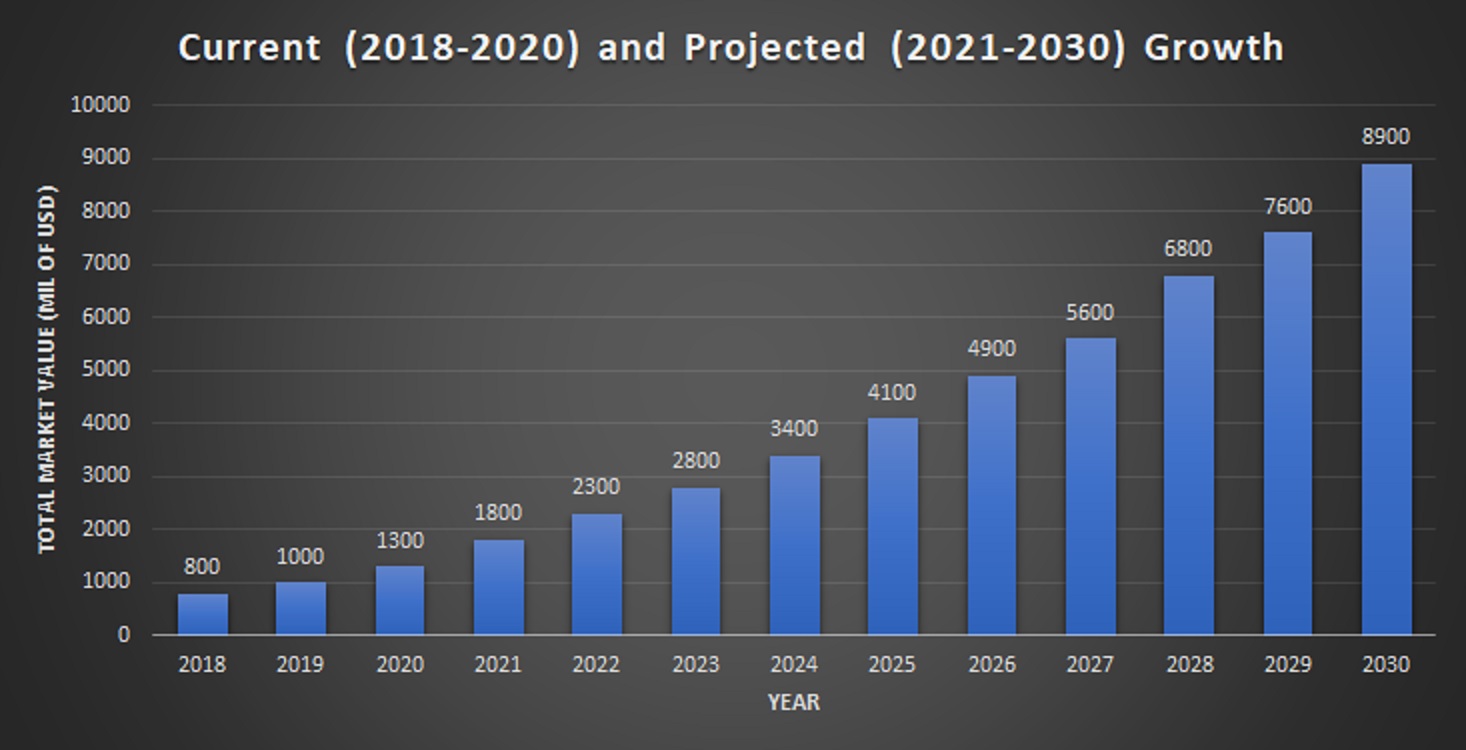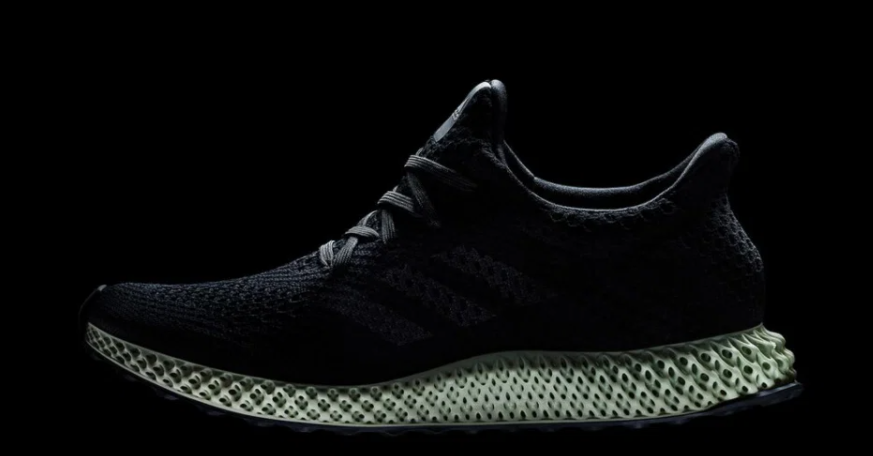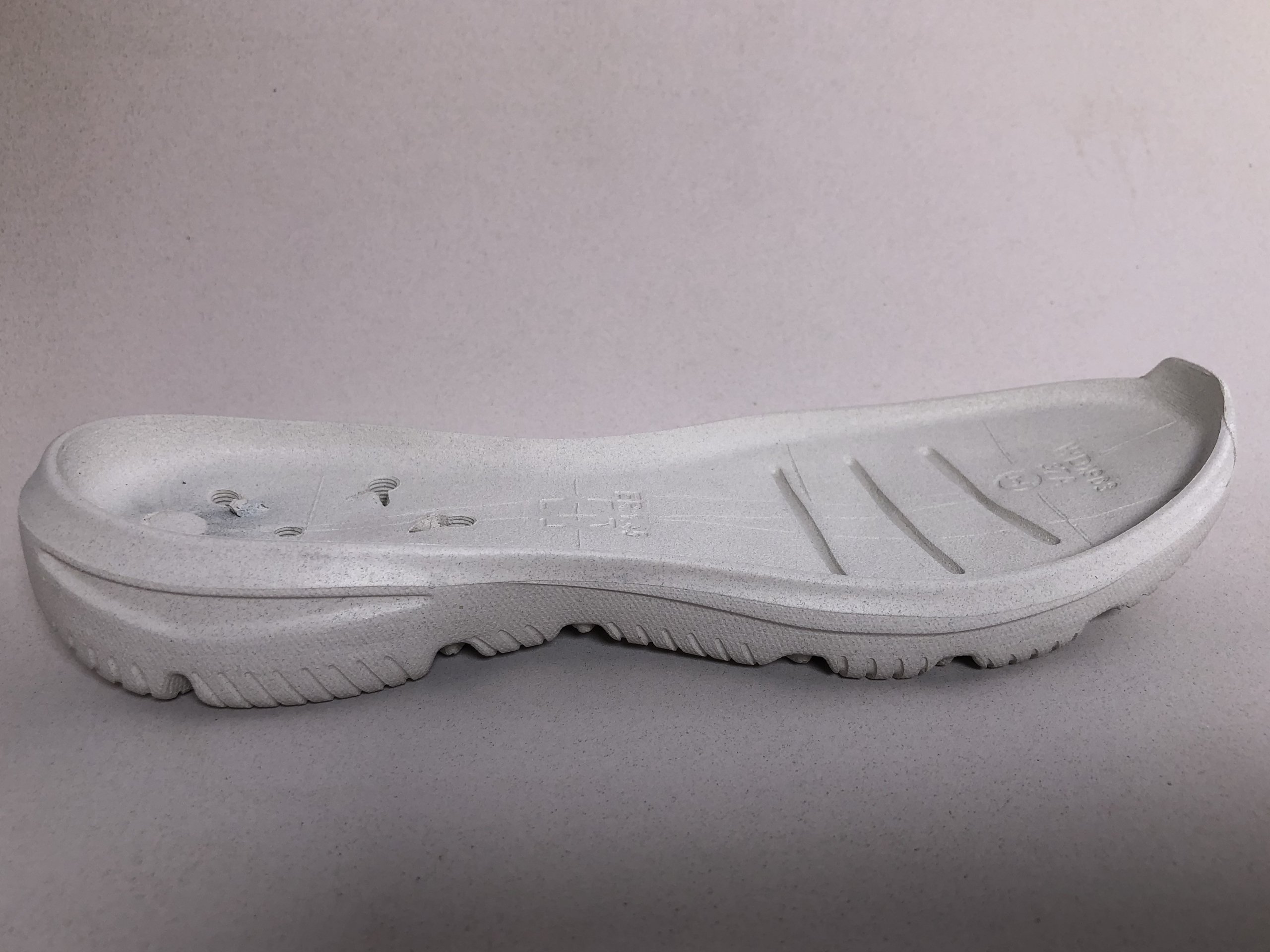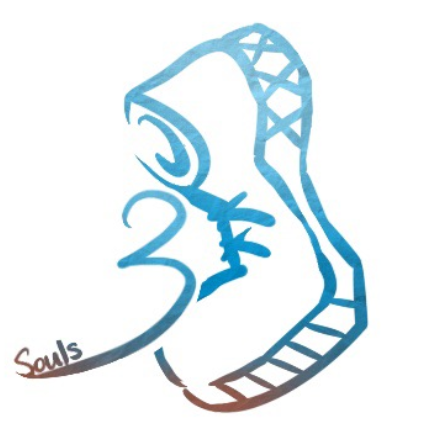![]() Those We Give Our Soul To
Those We Give Our Soul To![]()
The projected worldwide growth rate from 2019-2023 is expected to be 19% annually, showing high faith in the growth of this industry. This represents an upward shift in the portion of the footwear market made up by 3D printed components, from 0.3% of the total market to 1.5% by 2029. The greatest expected growth, about 43% of the total market, will take place in North America, with men being the demographic demonstrating the greatest interest in personalized, printed shoes.

The graph of projected growth above demonstrates a clear trend of positive growth over the next decade, giving credence to the viability of this industry going forward.
 Competitors
Competitors
As of today, the market consists of injection-molded EVA midsoles which is a midsole casted within a mold and air bubbles blown into them. Several shoe companies still use this technique such as Nike, Adidas, and Brook’s running shoes. This may be the most popular, but that doesn’t mean it is the best. The EVA-casted midsoles are restrictive in they cannot contain any detailed design work. This means that these don’t have a great capability in order to have a midsole tailored specifically to each customer. Also the micro lattices have the capabilities of outperforming past midsoles.

Other companies have also begun their advancements towards micro lattice footwear such as the Adidas Futurecraft 4D, however, what they have made was not specific tailoring in characteristics or performance for the individual.
 Cost Comparison
Cost Comparison
One inevitable downside of 3D printing the midsoles is the cost involved. While the mass manufacturing method of EVA midsoles allows for a cheap production cost, about $1.50 per sole, 3D printed shoes cost significantly more due to being individually designed and printed. The production cost ranges from $26 to as much as $45.

As significant of a price hike as this might represent, it’s important to remember the benefits of this mode of manufacturing. The goal in creating the 3D printed shoes isn’t to create a necessarily cheaper shoe; it’s to create a higher performing shoe that is better fitted for individual consumers. Our goal is to reach out to the niche market group of runners willing to pay the greater cost for the bump in their performance.
In terms of cost of purchase, running shoes with EVA manufactured midsoles go for about $50 to $100 on average. While the cost for shoes with 3D printed shoes would be significantly higher, our surveys indicate that nearly a third on runners would be willing to pay $200 or even as much as $300 for shoes that can max out their performance. This is the group we are aiming for: those who would take a chance with our product to improve their running.
![]() Success Factors
Success Factors![]()
There is currently growing consumer demand for personalized products. Mass produced shoes, while efficient overall, cannot guarantee a perfect fit for each individual consumer. In this way, personalized shoes meet the exact specifications required by each customer.
This coincides perfectly with an increased focus in digital manufacturing and automation. 3D printing as a whole is gaining popularity by the day, with many industries seeking to use it in some capacity. Manufacturing shoes using this method is therefore the inevitable fate of the footwear industry.
The use of 3D printing technology allows for the creation of an intricate, aesthetic lattice design for our midsole that’s easy on the eyes and on the feet. Using these midsoles, we can enhance runner performance and guarantee a better running experience.
